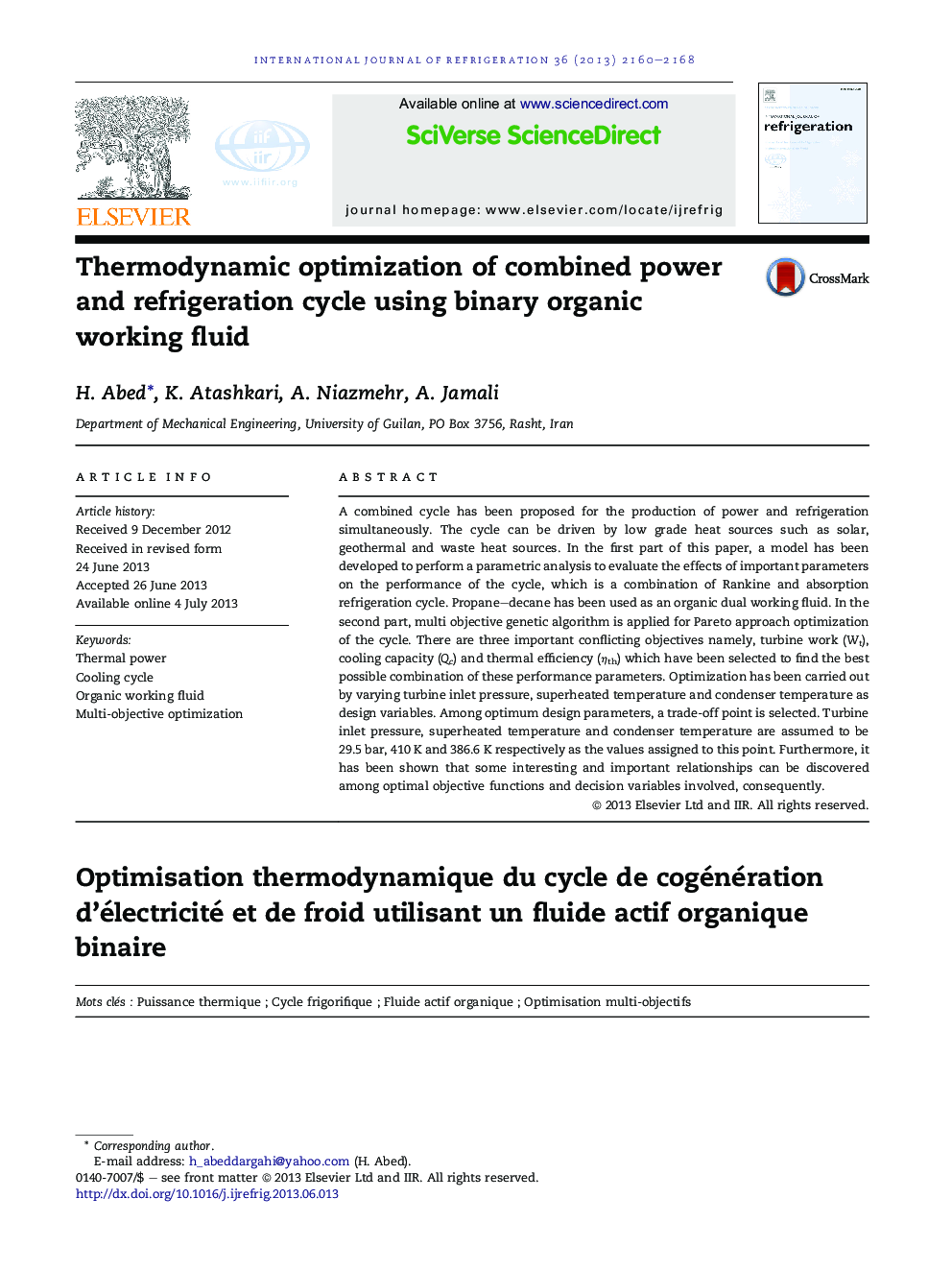| Article ID | Journal | Published Year | Pages | File Type |
|---|---|---|---|---|
| 788713 | International Journal of Refrigeration | 2013 | 9 Pages |
•Parametric analysis of combined power and refrigeration cycle has been presented.•In this evaluation, propane–decane is used as organic binary working fluid.•We compare the present investigation with using ammonia–water effects.•We find the optimal trade of point which its values are d = [29.5 bar, 410 K, 386.6 K].•Optimization led to the discovering of relationships and optimal design principles.
A combined cycle has been proposed for the production of power and refrigeration simultaneously. The cycle can be driven by low grade heat sources such as solar, geothermal and waste heat sources. In the first part of this paper, a model has been developed to perform a parametric analysis to evaluate the effects of important parameters on the performance of the cycle, which is a combination of Rankine and absorption refrigeration cycle. Propane–decane has been used as an organic dual working fluid. In the second part, multi objective genetic algorithm is applied for Pareto approach optimization of the cycle. There are three important conflicting objectives namely, turbine work (Wt), cooling capacity (Qc) and thermal efficiency (ηth) which have been selected to find the best possible combination of these performance parameters. Optimization has been carried out by varying turbine inlet pressure, superheated temperature and condenser temperature as design variables. Among optimum design parameters, a trade-off point is selected. Turbine inlet pressure, superheated temperature and condenser temperature are assumed to be 29.5 bar, 410 K and 386.6 K respectively as the values assigned to this point. Furthermore, it has been shown that some interesting and important relationships can be discovered among optimal objective functions and decision variables involved, consequently.
